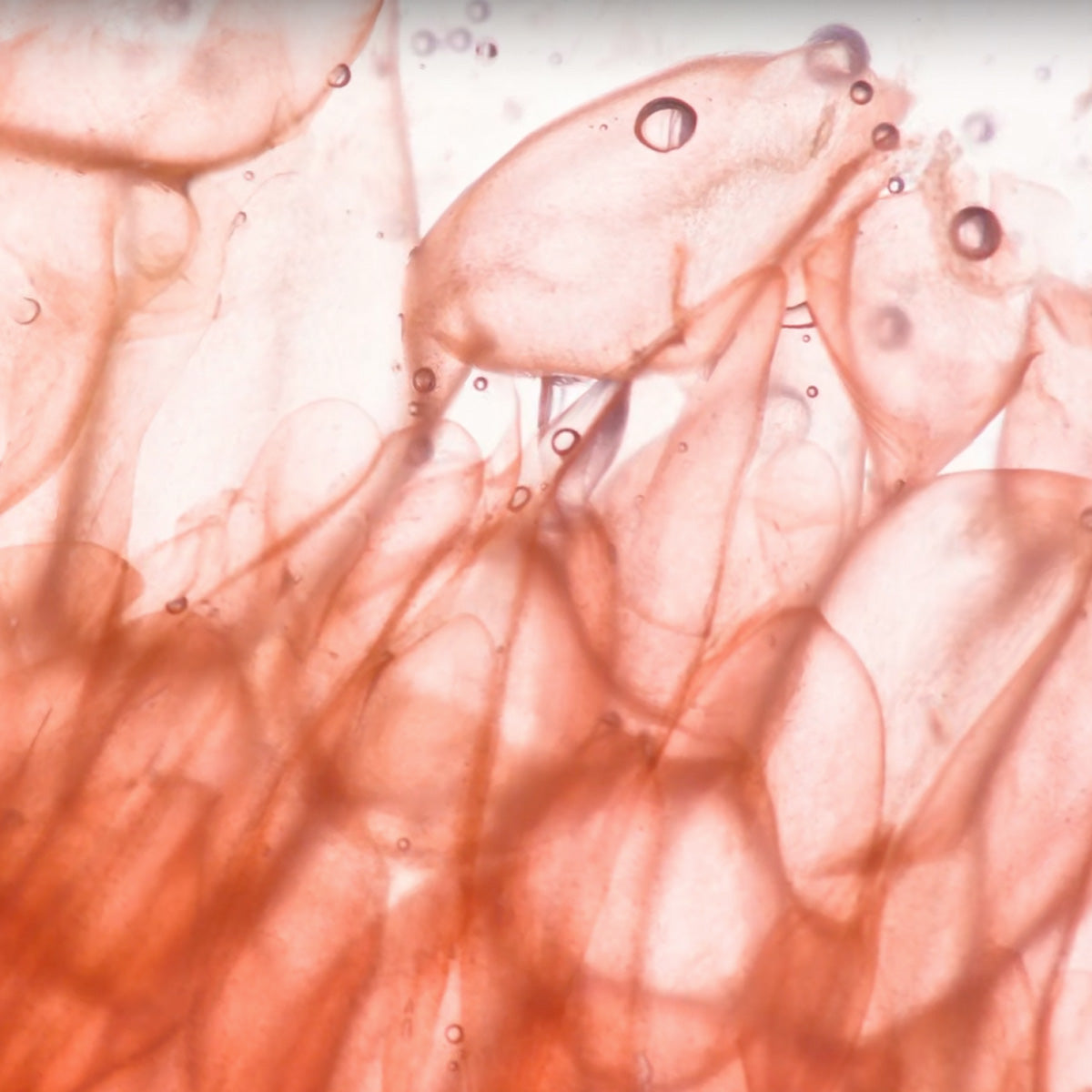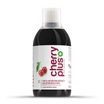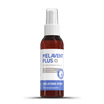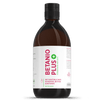

Imagine being able to give your cells a "reset button" and support processes that are essential for a long and vital life. Sounds almost too good to be true? This is precisely where Urolithin-A comes in – a compound produced in the body from pomegranate. The ancient Greeks already prized this fruit as the "fruit of the gods."
Today, intensive research is being conducted into the influence of urolithin-A on cell function and longevity . In this article, you will learn what urolithin-A is, how it works in the body, and how you can benefit from its advantages.
Here you will learn...
The most important points in brief
Urolithin-A is produced in the body from ellagic acid – the amount produced depends heavily on the individual intestinal flora.
Pomegranate provides ellagic acid and is therefore a particularly important source for the formation of urolithin A.
Current study results suggest the potential of urolithin-A in relation to cell health and longevity .
To ensure an effective supply of urolithin-A, highly concentrated pomegranate juice concentrate is recommended.
What is Urolithin-A?
Urolithin A is a polyphenolic compound produced in the body from ellagic acid. Since ellagic acid cannot be directly utilized, intestinal bacteria convert it into various urolithins, with urolithin A and urolithin B being the most common end products. Urolithin A, in particular, is well-studied and the most frequently detected in the body.
Once urolithins are formed in the body, they enter the bloodstream and undergo further transformation processes . They are linked to molecules such as methyl, glucuronide, or sulfate groups, which facilitates their transport and metabolism.
Regular consumption of foods rich in ellagic acid, such as pomegranate, can lead to a buildup of significant amounts of urolithin in the body. Urolithin A is stored not only in the intestines, but also in the prostate, liver, kidneys, and even the brain (1).

Polyphenols are secondary plant compounds found in various plants such as vegetables, fruits, and grains. In nature, polyphenols protect plants from pests, diseases, and UV radiation, while also attracting beneficial insects (2).
Polyphenols consist of complex structures and can be divided into four main classes according to their chemical composition. Numerous derivatives exist within these classes. An example of a derivative within the class "phenolic acids" is ellagic acid , which plays a crucial role as a precursor for the formation of urolithin A in the intestine (3).
What should you pay attention to regarding Urolithin-A?
Consuming foods rich in ellagic acid does not always lead to the formation of urolithin A. The individual gut microbiota is crucial, as not everyone has the necessary composition of bacteria to enable this conversion (4).
According to Toney et al., healthy individuals without metabolic disorders tend to produce higher levels of active urolithin-A. In contrast, production is often low in individuals with metabolic disorders. Instead, other, less potent forms such as iso-urolithin-A or urolithin-B are produced (5).
To ensure a reliable supply, it is recommended in this case to use standardized preparations such as pomegranate juice concentrate . The higher the intake of ellagic acid, the greater the likelihood that your body can produce sufficient urolithin A.

What effect does Urolithin-A have on the body?
Since the discovery of urolithin-A in 1980, numerous studies have investigated its functions in the human body . The focus has been on its effects on:
- Inflammatory processes
- Cognitive functions
- Metabolic disorders
- Prostate health
- Muscle performance
- Anti-aging properties (4)
Urolithin-A and longevity: The key to healthy aging?
Perhaps you've already heard of " longevity "—a term that encompasses a fascinating topic. It's not just about living as long as possible, but also about living free from illness and discomfort. This is precisely where Urolithin-A comes in.
Research is intensively investigating whether urolithin-A can support processes associated with healthy aging . Cell health, particularly the function of mitochondria – the energy sources of our cells – plays a central role in this. Their efficiency declines with age, which can promote cellular aging and loss of function.
This is how Urolithin-A works:
- Promotion of mitophagy : Urolithin A supports the cellular “cleaning mechanism” in which damaged or inefficient mitochondria are broken down and replaced by new, functional ones.
- Optimization of energy production : By renewing the mitochondria, cellular energy can be used more efficiently, potentially resulting in increased muscle strength, better endurance, and supported cognitive functions.
- Regulation of cellular stress : Urolithin A may help modulate the response of cells to oxidative stress and other stressors, thereby potentially reducing damage to DNA and cell structures.
- Potential slowing of aging processes : By reducing cell damage and supporting cell health, urolithin A could slow down age-related processes (4).

Pomegranate as an important source of urolithin-A
As mentioned earlier, pomegranates are particularly rich in ellagic acid. The most popular way to enjoy pomegranates is to eat the pulp, which has a pleasant sweet-tart flavor. However, opening the fruit and removing the seeds is often a tedious process.
Pomegranate juice concentrate, on the other hand, offers a convenient way to utilize the fruit's valuable nutrients in concentrated form. Many varieties are available on the market, but not all juices fully exploit the pomegranate's potential: often only the sweet pulp is processed, while the majority of the polyphenols are found in the peel.
When buying juice, make sure it is made from the whole fruit, including the peel. Juices particularly rich in polyphenols are often recognizable by a slightly bitter note that complements the natural sweetness of the pulp (6, 7).
Our recommendation
Tips for everyday life: How to support your urolithin A production
- Intake of polyphenols : One tablespoon of high-quality pomegranate juice concentrate such as Granavie PLUS daily provides 900 mg of polyphenols – ideal for urolithin A supply.
- Maintaining a healthy gut flora : The conversion to urolithin-A takes place in the gut. Support your gut health with fermented foods, a high-fiber diet, and sufficient fluid intake.
- Enjoy variety: Strawberries, raspberries, blackberries or walnuts supplement the polyphenol intake and provide different nutrient profiles.
- Incorporate exercise : Just 30 minutes of physical activity a day can enhance the effect of urolithin-A on the mitochondria.
- Pay attention to quality : Products with whole-fruit processing, organic quality and high polyphenol content utilize the full power of the pomegranate.
Conclusion
Urolithin-A is a fascinating compound derived from ellagic acid in pomegranates that can have various positive effects on the body, particularly regarding cell health and longevity. However, since the body's own production of urolithin-A depends on your individual gut flora, dietary intake alone is often insufficient. To fully utilize the pomegranate's potential , it is therefore especially important to choose products that process the entire fruit, including the peel – as this is where the majority of the valuable polyphenols are found. High-quality pomegranate juice concentrate offers a convenient way to consume these nutrients in concentrated form, thus optimally harnessing the power of the pomegranate for your body.
Our expert
What is Urolithin-A?
Urolithin-A is a polyphenolic compound that is formed in the body from ellagic acid.
What are polyphenols and how are they related to urolithin-A?
Polyphenols are secondary plant compounds that perform various functions in plants. Ellagic acid is a polyphenol that is converted to urolithin A in the intestine.
How is urolithin-A formed in the body?
Urolithin-A is produced when intestinal bacteria convert ellagic acid from foods such as pomegranates. This conversion depends on the composition of the intestinal flora.
Can everyone produce urolithin A?
Not everyone can produce urolithin-A to the same extent. The ability to convert ellagic acid into urolithin-A depends on the individual gut flora.
Is Urolithin-A an anti-aging miracle?
Although there is promising evidence that urolithin-A could support cell health and mitochondrial function, further studies are needed to confirm the exact effects on aging.
How can I get more Urolithin-A into my body?
Consuming foods rich in ellagic acid, such as pomegranates, strawberries and walnuts, can promote the production of urolithin-A in the body.
What are the advantages of juices made from the whole pomegranate fruit?
Juices pressed from the whole pomegranate fruit, including the peel, contain all the valuable nutrients and polyphenols found in the fruit. Unlike juices made only from the pulp, they offer a broader spectrum of health-promoting ingredients.
References for further reading:
- Kujawska M, Jodynis-Liebert J. Potential of the ellagic acid-derived gut microbiota metabolite - Urolithin A in gastrointestinal protection. World J Gastroenterol 2020; 26(23):3170–81. doi: 10.3748/wjg.v26.i23.3170
- Rana A, Samtiya M, Dhewa T, Mishra V, Aluko RE. Health benefits of polyphenols: A concise review. J Food Biochem 2022; 46(10):e14264. doi: 10.1111/jfbc.14264
- Cásedas G, Les F, Choya-Foces C, Hugo M, López V. The Metabolite Urolithin-A Ameliorates Oxidative Stress in Neuro-2a Cells, Becoming a Potential Neuroprotective Agent. Antioxidants (Basel) 2020; 9(2). doi: 10.3390/antiox9020177
- D'Amico D, Andreux PA, Valdés P, Singh A, Rinsch C, Auwerx J. Impact of the Natural Compound Urolithin A on Health, Disease, and Aging. Trends Mol Med 2021; 27(7):687–99. doi: 10.1016/j.molmed.2021.04.009
- Toney AM, Fox D, Chaidez V, Ramer-Tait AE, Chung S. Immunomodulatory role of urolithin A on metabolic diseases. Biomedicines 2021; 9(2). doi: 10.3390/biomedicines9020192
- Benedetti G, Zabini F, Tagliavento L, Meneguzzo F, Calderone V, Testai L. An Overview of the Health Benefits, Extraction Methods and Improving the Properties of Pomegranate. Antioxidants (Basel) 2023; 12(7). doi: 10.3390/antiox12071351
- Mphahlele RR, Fawole OA, Mokwena LM, Opara UL. Effect of extraction method on chemical, volatile composition and antioxidant properties of pomegranate juice. South African Journal of Botany 2016; 103:135–44. doi: 10.1016/j.sajb.2015.09.015



![Zinc Capsules [Zinc Bisglycinate]](http://cellavent.de/cdn/shop/files/CH_essentials-zink-kapseln-Produktbilder_2025.png?v=1760952204&width=104)











